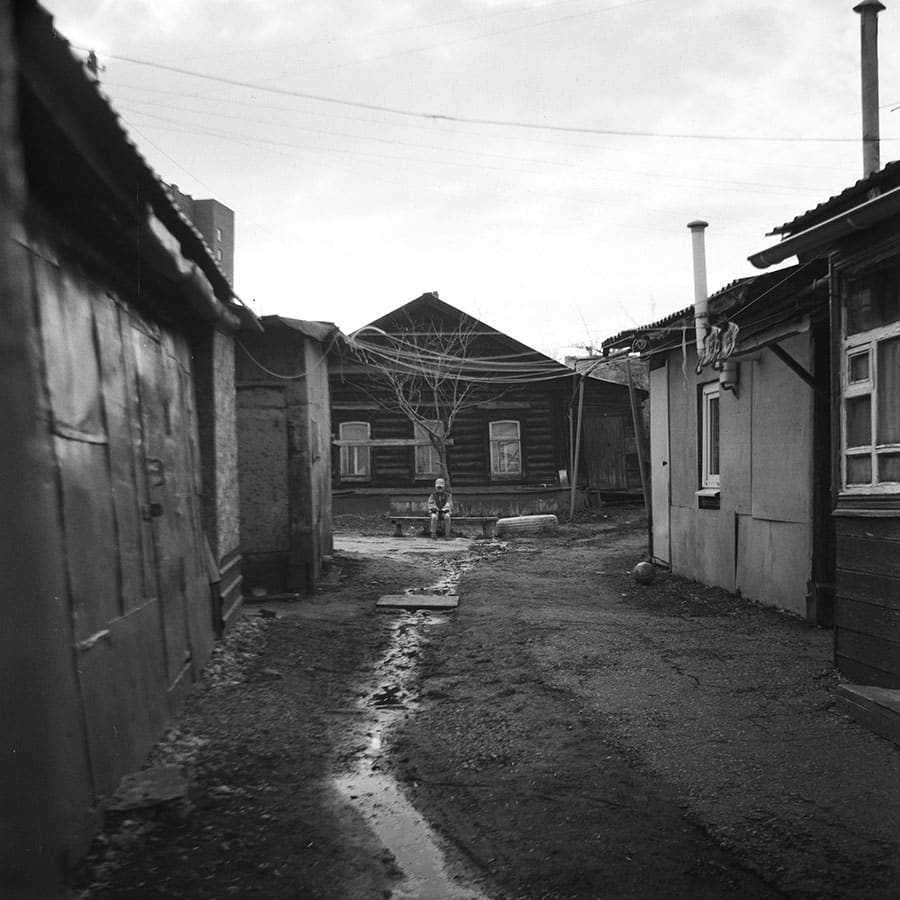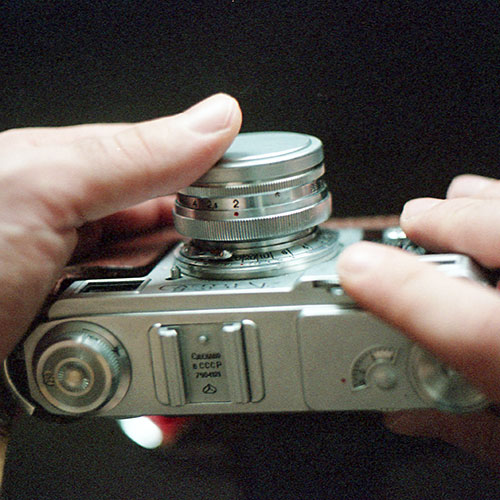Soviet Medium Format Cameras
In this article the team of Sovietcameras.org will tell you about all significant Soviet medium format cameras.

Quite a lot of medium format cameras were released in Soviet times, but in this article we will tell you about the most interesting Soviet medium format cameras that you can buy and use these days. we have deliberately chosen to leave out uninteresting models or those that cannot be bought now, as well as those that you definitely will not like using.
There were several factories that produced Soviet medium format cameras and the most interesting of them are:
So, let’s take a closer look at each plant and find out which Soviet medium format cameras they produced.
KMZ
At KMZ, they were among the first in the USSR to start producing (to be more precise, copying from German models) Medium format film cameras.
The very first were Moskva folding medium format cameras with a frame size of 6x9cm, which were clones of the German medium format Zeiss Ikonta.

Moskva-1
Moskva-1 is a Medium Format Scale camera, which means it does not have a built-in rangefinder or ground glass. Focusing was to be carried out using the distance scale on the lens body. The camera has a very decent Industar-23 4.5/110 lens, with which you can get excellent images with very pleasant sharpness and pleasant bokeh. Moskva-1 was equipped with a very good shutter for its days with a set of shutter speeds from 1 to 1/250 sec.

Moskva-2
Moskva-2 was also a clone of the German Zeiss Ikonta, but had a really significant advantage over the first model in the form of a rangefinder. This detail greatly simplifies and speeds up the process of taking pictures, because you do not have to guess the distance or use third-party rangefinders.

Moskva-4
This medium format film camera is essentially an improved version of Moskva-2. Unlike the second model, with the help of Moskva-4, you can get not only photos in 6×9 format, but also in 6×6 format. On 120 film, you can get 8 frames in 6×9 format and 12 frames in 6×6 format. Otherwise, Moscow-4 practically does not differ from the second model.

Moskva-5
This medium format Russian camera had more differences from previous models. Moskva-5 has a more convenient viewfinder with the ability to switch between formants. The Industar-23 lens was replaced by Industar-24 with aperture of 3.5 and a focal length of 105mm.

Iskra
Iskra is the best Soviet folding medium format camera. This camera combines all the best that could be in a folding camera. The Iskra camera has a large clear viewfinder, a convenient focusing system, a frame counter, a beautiful and sharp lens with beautiful bokeh, a good set of shutter speeds and much more.

Iskra-2
The Iskra-2 camera is nothing more than the Iskra of the first model with a built-in selenium light meter. As in the first model, this camera has a large number of features that allow you to create precarious photos and enjoy the photography process.

Arsenal
The Arsenal plant specialized in creating better and more advanced cameras for professional photographers. This factory produced two types of 6×6 SLR cameras.
The first type is the Kiev-6c and Kiev-60 cameras, which had the appearance and control elements of a conventional 136mm film camera and were clones of Pentacon Six cameras. The second type is the Hasselblad clones, which, although they did not have the same build quality as the Swedish original, produced excellent photo quality.

Kiev-6С
The Kiev-6c camera was the first Soviet clone of the German Pentacon Six. The camera had a great set of shutter speeds, a very handy frame counter and a very good set of lenses. The only downside to the camera was that the shutter button was to the right of the lens.

Kiev-60
In Kiev-60, this annoying flaw was corrected, and the shutter button was moved to its usual place to the left of the lens. The camera retained all the advantages of the previous model. According to all members of the team of our site, this is one of the best Soviet medium format cameras.

Salut
The Salut camera was an almost exact clone of the Hasselblad 1600F camera. As with the Swedish original, the camera had very user-friendly controls, a modular design with interchangeable lenses, backs, focusing hoods, and a fine set of lenses that produced very decent photographs.

Kiev-88
Kiev-88 is an improved version of the Salut camera. The Kiev-88 camera has few differences from the previous model, and despite the truly Soviet build quality, it is a fairly good alternative to the expensive Hasselblad. This is one of the most inexpensive modular cameras in our time.

GOMZ / LOMO
At the LOMO plant, unlike KMZ and Arsenal, the simplest cameras for novice photographers were produced, for example, Lubitel cameras.
Komsomolets and Lubitel are medium format TLR cameras and were nothing more than clones of the German Voigtlander Brillant camera.

Komsomolets
The Komsomolets camera was an exact clone of the Voigtlander Brillant, and despite the fact that it did not have any outstanding technical features, it made it possible to create quite cool photographs with a unique vintage effect. But in our time there is no point in looking for and buying these cameras, since Lubitel cameras are cheaper and better than Komsomolets in everything.

Lubitel
The Lubitel camera is an improved version of Komsomolets. Unlike the previous model, the Lubitel had a lighter lens, which made it possible to take pictures using less light-sensitive film and in less lit conditions. The Triplet T-22 f4.5/75 lens produces beautiful photos with sharpness in the center and a soft effect at the edges.

Lubitel-2
Lubitel-2 is an improved version of the Lubitel camera. Self-timer and cable sync contact have been added to this model. This camera was still made of bakelite and had a Triplet T-22 lens. Lubitel-2 can still be found in online stores in good condition and at an affordable price.

Lubitel-166
The Lubitel-166 camera was no longer made of bakelite, but of plastic, which made the camera much lighter. In addition, a frame counter combined with an updated film rewind mechanism was added to the camera. Because of this mechanism, the camera was unreliable, and was replaced by the Lubitel-166b.

Lubitel-166B
Lubitel-166B is an improved version of the Lubitel-166 camera. Unlike the previous model, the Lubitel-166b camera was a much more reliable, albeit simpler camera. This camera is produced in huge quantities, so finding one in good condition is not difficult now.

Lubitel-166U
Lubitel-166u is the final version of the Lubitel series of cameras. Here is collected all the best that was invented and borrowed by the engineers of the LOMO plant. Among other things, Lubitel-166u can take both 6×6 and 6×4.5 photos.

Conclusion
Soviet medium format cameras are a great alternative to German and Japanese 120mm cameras. Most of these cameras have quite good ergonomics, can take decent photos and are sold at a really low price.







